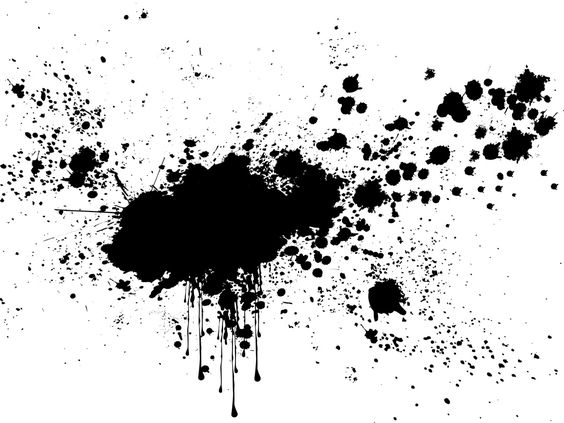 Some months ago I received an invitation to Aarhus University to speak on Péladan’s literature and “esoteric modernism” at a closed symposium with scholars doing some incredibly exciting work in this area, breaking new ground on possible interdisciplinary approaches between the disciplines of literary studies, art history, and esoteric studies.
Some months ago I received an invitation to Aarhus University to speak on Péladan’s literature and “esoteric modernism” at a closed symposium with scholars doing some incredibly exciting work in this area, breaking new ground on possible interdisciplinary approaches between the disciplines of literary studies, art history, and esoteric studies.
This was quickly followed by a second invitation to Gothenburg University to deliver a guest lecture- also on Péladan. But this one came with an extra bonus: a further invitation to prepare a touring exhibition and accompanying artist lecture for two further venues in Sweden. See brochure and photos below.
I’m currently in Aarhus, where my paper “Return from Oblivion: Péladan’s Literary Esotericism” was very well received today, and I’ve been enjoying some of the most constructive and exciting scholarly discussion that I’ve ever experienced at a conference. I’ll be presenting an extended version of this paper at Gothenburg University on Monday.
Return From Oblivion: Joséphin Péladan’s Literary Esotericism and its Place in Cultural History
Sasha Chaitow, PhD
Joséphin Péladan (Sâr Merodack, 1858-1918) was a key figure in the inception and development of French Symbolism. Responding to multiple cultural shifts experienced by fin-de-siècle French society, he authored over a hundred novels and monographs in an attempt to bring about the spiritual regeneration of society through mythopoetic art underpinned by esoteric thought. Based on an eclectic esoteric cosmology, expressed through art, literature, and philosophical monographs, his vast, yet coherent oeuvre was intended to bring this call for regeneration to as wide an audience as possible, and thus to spark a social renaissance.
Péladan’s intellectual pattern is embedded within the ideas formed at the intersections of Illuminism, Romanticism, and the anti-philosophe movement, drawing on numerous aspects of esoteric thought. The post-Enlightenment quest for a new understanding of human origins and history, informed by allegorical mythography and philosophical historiography coalesce in his oeuvre, which can also be shown to represent the act of stepping over the threshold of Modernism in response to the challenges of his time. Péladan’s originality lies in the synthesis and its highly individual—and individualistic—nature.
However, vilified by his contemporaries, Péladan’s work slipped into oblivion. Extant scholarly accounts of his life and work have tended to focus on his eccentricity or decontextualised elements of his oeuvre. Until recently, scholarly studies had neither explored the content of his work, nor its cultural context and intellectual precedents, resulting in the perpetuation of misconceptions regarding his esoteric philosophy, its role in his work, and its relationship to the wider history of ideas within his historical context.
Péladan’s output represents possibly the largest single body of “literary esotericism,” which is to say, the specific category of literature as an esoteric symbol and vehicle of esoteric praxis. Literary esotericism has never been fully mapped as a genre, since overtly occult works are frequently dismissed as insignificant, and those with more covert references are treated in more conventional ways. Literary studies of works influenced by esotericism have rarely incorporated the contextual material available from the field of Esoteric Studies, nor paid due attention to matters of historical context, definition and terminology, so that literary scholars dealing with notions of occultism, esotericism, and magic do not always grasp their nuances and significance. Simultaneously, the methodological toolboxes of historiography and sociology of religion may lack the specialised methodologies and vocabulary to approach literary material effectively. This has led to various lacunae in the understanding of many bodies of work, and in the case of Péladan, to his neglect and the perpetuation of severe misinterpretations. Nonetheless, sufficient contextualisation and the judicious use of interdisciplinary approaches may provide a foundation for the decipherment of such texts.
In this paper I will first present a brief survey of Péladan’s life and work, highlighting their points of interest alongside the methodological problems of working with such material from monodisciplinary perspectives. Following a justification of the term “literary esotericism” in the context of Modernist literature, I shall propose both possible ways forward in terms of methodology, as well as specific examples of potential future research in relation to Péladan that may hold import for the wider field.
Biographical Note:
Sasha Chaitow, PhD, completed her doctoral research on Joséphin Péladan’s life and work in 2014 at the University of Essex. She holds two MAs in Western Esotericism (University of Exeter, 2008), and English Literature (University of Indianapolis, 2004) and is interested in the interdisciplinary study of the intersection between esotericism and culture. She has published a monograph on Péladan (Salonica, 2013), several academic articles on Péladan and other topics in Western Esotericism, and has published internationally on related topics for the general reader. She has delivered numerous academic and public lectures on related subjects and currently runs art history courses for an adult education centre in Corfu, Greece. Sasha is also a prolific visual artist and runs a gallery specialising in Greek sacred art and heraldry in Corfu. Her academic study of Péladan is currently undergoing peer review with a view to publication later this year.
Some of the icons travelling with me to Sweden:
Exhibition brochure














